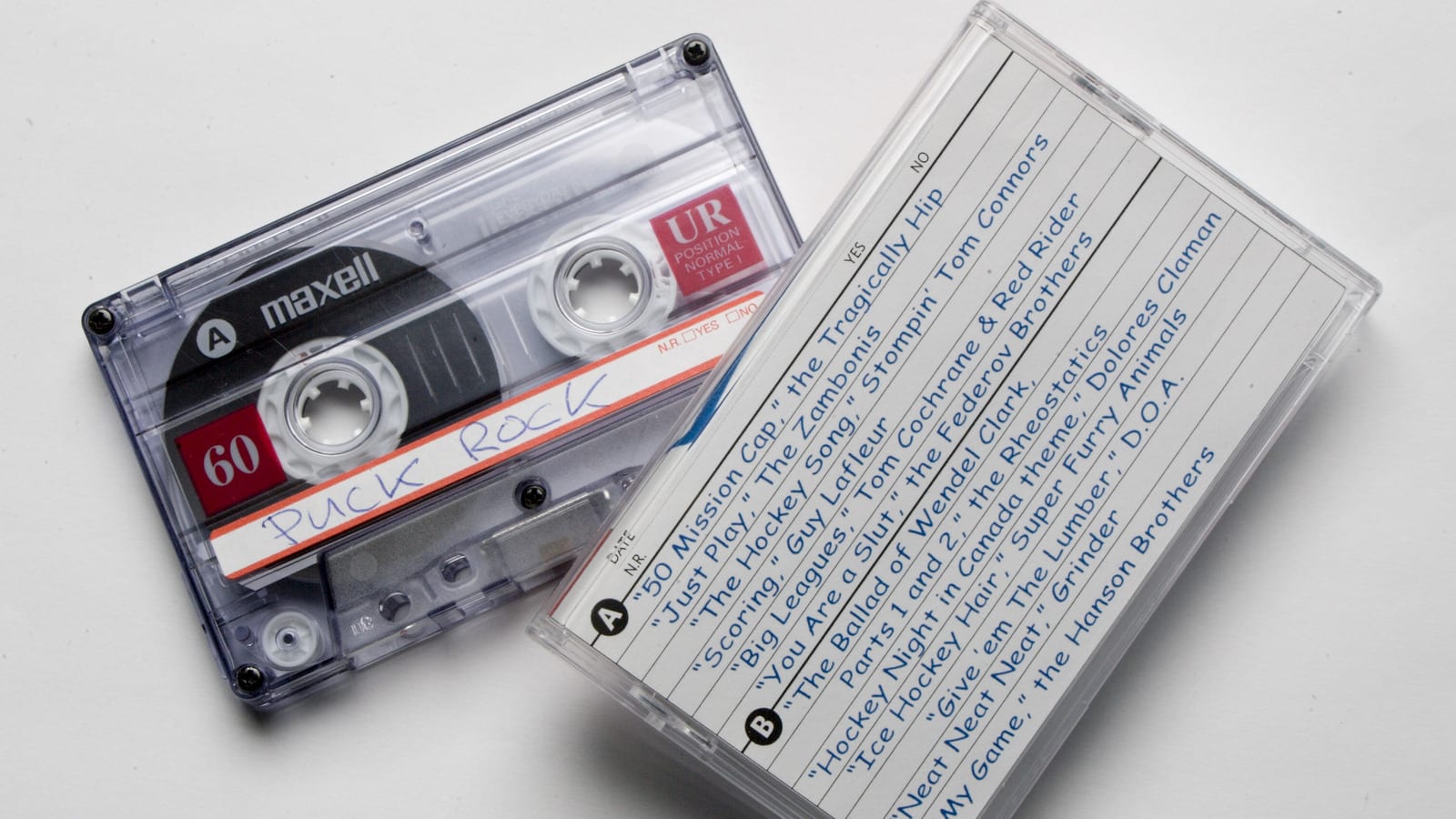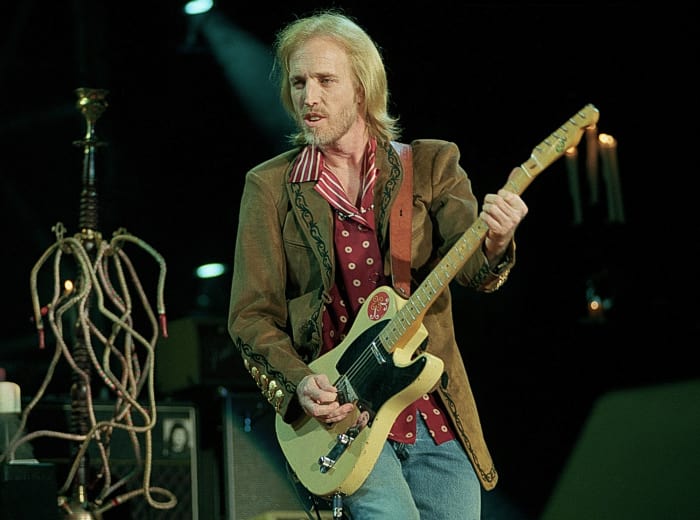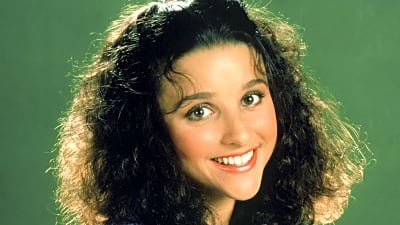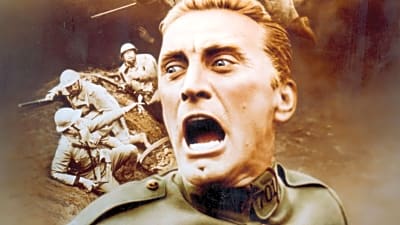The whole world changed the day you realized you could hook up your record turntable to a cassette deck and make a tape compilation of your favorite music. When that tape became portable via boomboxes and Walkmen, those mixes became the soundtrack to your life. At some point, we called them "mixtapes" and we began making piles of them for ourselves and our friends/boyfriends/girlfriends/etc. As Nick Hornby wrote in "High Fidelity," making a mixtape was "like writing a letter." It was a unique, handmade form of communication throughout the 1980s and into the '90s. And if you were making one during that era, you probably couldn't finish without including a track from one or more of the following artists.
Rick Diamond/Getty Images
We lost Tom Petty too soon at the age of sixty-six, but he’ll live on in the millions of mixtapes music lovers made for themselves and each other. Petty’s deep library of hits had everything: hard rockers (“American Girl”), laid-back jams (“The Waiting”) and fist-pumping anthems you must sing along to at the top of your lungs no matter where you are when they come on (“Free Fallin’”). Petty always worked.
Ebet Roberts/Getty Images
Prince’s genre-defying genius fit on every conceivable kind of mixtape: rock, soul, funk, slow jams… the man mastered every style. Yes, even country music (he wrote “You’re My Love” for Kenny Rogers). Prince left you endless options: you could go funky, rocking, brooding, romantic, ebullient and just plain nasty. You could also dip into his B-sides and recruit a new fan of “Erotic City,” “She’s Always in My Hair” or “Irresistible Bitch.”
Bill Marino/Sygma via Getty Images
No one’s ever been upset to hear “Thunder Road” or “Born to Run,” but Springsteen’s early tracks like “Prove It All Night,” “The E Street Shuffle” and “Spirit in the Night” were always welcome additions, even for non-Boss fans (whose distaste largely had to do with the heavy rotation of every synth-heavy song off of “Born in the U.S.A.”) Looking to darken the mood? Any track from “Nebraska” will do (though nothing beats “Highway Patrolman”).
Paul Natkin/Getty Images
With “Dry” and “Rid of Me,” P.J. Harvey gave us two LPs worth of alternative rock defiance that fit more snugly on a mixtape than the overproduced sounds of Nirvana and Pearl Jam. Also, many people weren’t hip to Harvey’s greatness until her 1995 breakthrough “To Bring You My Love,” so you felt like you were sharing a secret when you gave folks a taste of “Water.”
Clayton Call/Redferns/Getty Images
The tuneful noise of The Pixies was perfect for sing-alongs and headbanging. Some mixtape maestros will brag that they were topping off their compilations with “Where Is My Mind” long before David Fincher used it to close out “Fight Club.” “Debaser” was a choice Side One, Track One selection, and you didn’t need a buffer song to make “Monkey Gone to Heaven” work.
6 of 25
A Tribe Called Quest
Chris Carroll/Corbis via Getty Images
The late ‘80s and early ‘90s were the golden age of hip-hop, so you could easily make a separate list just for rap mixtapes. Dope new LPs were dropping every week, while demos from amazing unsigned artists were constantly making the rounds amongst hardcore fans. It could be hard to cross the streams when making a mixtape for a non-rap fan, but you could get yourself a convert with A Tribe Called Quest. The “Walk on the Wild Side” sample on “Can I Kick It?” was straight irresistible, as was the romantic smooth-talk of “Electric Relaxation.”
Richard E. Aaron/Redferns/Getty Images
The Thin White Duke was a little like Prince in that he seemed to have a sound for every occasion. He fit right in alongside classic rockers (the one-two punch of “Ziggy Stardust” and “Suffragette City”), had no shortage of ‘80s classics (“Let’s Dance,” “China Girl” and “Modern Love”) and helped pioneer the grunge sound with Brian Eno in their Berlin collaborations. Plus, he was David Bowie, and everyone loved David Bowie.
J. Wilds/Keystone/Getty Images
Another band with a multitude of eras and sounds from which to choose, The Rolling Stones weren’t quite as elastic if only because some people just can’t stand Mick Jagger’s voice. But the real challenge with the Stones was to avoid their played-to-death hits from “Hot Rocks,” which was on every bar jukebox in America. The go-to LPs for deep Stones cuts: “Beggar’s Banquet,” “Exile on Main Street” and “Sticky Fingers.”
Michael Putland/Getty Images
Joni Mitchell might’ve been one of the most critically adored musicians of the 1970s, but her 1980s output was so dreadful that a whole generation of music fans never knew why their parents or older siblings loved her in the first place. She didn’t write many great uptempo/upbeat songs (save for “Big Yellow Taxi”), but if you were looking to communicate something difficult or painful to someone, Joni could probably say it much more eloquently for you.
Mike Prior/Redferns/Getty Images
The soulful grooves of Al Green could lift your spirits (“I’m So Tired of Being Alone”), get your partner in the mood (“Let’s Stay Together”) or help you mend a broken heart (“How Can You Mend a Broken Heart”). The Reverend was your man whenever you needed to build to a big song or transition out of an emotional high point.
Ebet Roberts/Redferns/Getty Images
One of the best bands of the New Wave era, XTC didn’t get big in the U.S. until the release of their comeback LP “Skylarking” in 1986. It was always fun to lead off a mix with the whimsical “Summer’s Cauldron” or drop in “The Man Who Sailed Around His Soul,” but the best mixtape cuts could be found in the band’s earlier albums. Two popular selections: “Senses Working Overtime” and “Making Plans for Nigel.”
12 of 25
Guided by Voices
Martyn Goodacre/Getty Images
Dayton, Ohio indie rockers Guided by Voices were six albums deep into their career when they finally broke through to the larger indie world with “Bee Thousand” in 1994. They never found their way to the mainstream, which made their short, perfectly crafted rock ditties a great mixtape secret weapon. It’s like that Beta Band scene in “High Fidelity;” whenever you shared a GBV song, you very likely were creating a new GBV fan.
13 of 25
The Replacements
Jim Steinfeldt/Michael Ochs Archives/Getty Images
While John Hughes was making bright and peppy films about coming of age, Paul Westerberg was relaying anguished dispatches of youthful failure and alienation from the trenches. Their run spans the glory days of the mixtape era (1981 to 1990), and every LP was stuffed with gems, but the choice cuts – “Unsatisfied,” “I Will Dare” and “Androgynous” – were all on “Let It Be.”
Jim Steinfeldt/Michael Ochs Archives/Getty Images
One of the most underrated songwriters of her generation, Aimee Mann is best known by far for her first big hit, “Voices Carry,” which she recorded with her band ‘Til Tuesday. That’s a great mixtape song, as was just about every other track on the three albums she recorded with the band. Amazingly, her solo output is even better. “Stupid Thing,” “Say Anything,” “Amateur...” all superb. When Paul Thomas Anderson made “Magnolia,” he stocked the movie with her songs, calling it his personal Aimee Mann mixtape.
Max Redfern/Redferns/Getty Images
Parliament was George Clinton’s commercial, party-ready band, but they weren’t terribly mixtape friendly given the length of their songs (which tended to run over six minutes). Funkadelic was more experimental, but they dropped some peculiar pop-rock classics that made for great “what the hell is that?” changeups. “Cosmic Slop,” “Red Hot Mama,” “No Compute” and “Get Off Your Ass and Jam” were always on time.
Alvan Meyerowitz/Michael Ochs Archives/Getty Images
No, not the folk stuff – not unless you were making a folk mixtape aka Valium. Pretty much anything off of “Highway 61 Revisited” and “Blonde on Blonde” and “Blood on the Tracks” would do the trick, but “Desire” had some sneaky great songs on it, too (notably “Hurricane” and the melancholy “One More Cup of Coffee” with Emmylou Harris).
Stuart Mostyn/Redferns/Getty Images
Neil Young tended to be a late college discovery for most people, though he received an early-‘90s signal boost to the kids when Pearl Jam performed “Rockin’ in the Free World” at the 1993 MTV Video Music Awards. "Harvest", "After the Gold Rush" and "Rust Never Sleeps" were mined for their introspective rockers, as were later albums like "This Note's for You" and "Freedom."
Jim Britt/Michael Ochs Archives/Getty Images
If you want to dance, if you want to sing, if you’re desperate to feel happy or if you need a shoulder to cry on, the music of Marvin Gaye was there. “The Big Chill” had worn everyone out on his 1960s Motown classics, but the mixtape era coincided with the rediscovery of “What’s Going On,” “Trouble Man” and the cut-out-the-small-talk masterpiece of seduction, “Let’s Get It On.”
Mick Hutson/Redferns/Getty Images
She only put out two great albums, but they landed smack dab in the middle of the mixtape era, and they were bursting with great songs full of love and rage. “The Lion and the Cobra” featured “Mandinka” and “I Want Your Hands on Me,” while “I Do Not What I Haven’t Got” boasted, among other classics, “Nothing Compares 2 U” and maybe the greatest breakup song ever written, “The Last Day of Our Acquaintance.”
Hulton-Deutsch Collection/CORBIS/Corbis via Getty Images
The degree of mixtape difficulty with The Beatles was deceptively high. It was amateur hour if you tried to drop a hit like “I Want to Hold Your Hand” or “Twist and Shout” into the mix. Why waste even two minutes on those moldy classics when you had relatively unknown psychedelic classics like “She Said She Said,” “I’m Only Sleeping” or the unconventionally brilliant “And Your Bird Can Sing” (Elvis Costello’s favorite Beatles tune)?
King Collection/Photoshot/Getty Images
For all most people knew, The Zombies were one of the pretenders to The Beatles’ British Invasion throne. They didn’t know about the band’s 1968 masterpiece LP “Odessey and Oracle.” But you did. And you always made sure to drop in little-known delights like “Care of Cell 44,” “Hung Up on a Dream” and “This Will Be Our Year.”
Ebet Roberts/Redferns/Getty Images
You can only allow for so much mope-rock on a mixtape, and you don’t want to run the risk of killing someone with an acute Morrissey allergy. What do you do? You go with The Cure. Early hits like “Let’s Go to Bed” and “Killing an Arab” were always welcome, but you generally wanted to stick to the flawless LP duo of “Kiss Me, Kiss Me, Kiss Me” and “Disintegration.” Another candidate for all-time-best Side One, Track One: “Plainsong.”
Paul Natkin/WireImage/Getty Images
Starting with their debut EP “Chronic Town,” R.E.M. rattled off one good-if-not-great album after another throughout the entirety of the mixtape era. You had to be careful with some of the tracks on their first mainstream hits (especially “Green” and “Out of Time”), but almost every other song had its place – yes, even “Everybody Hurts.”
Jean-Marc Giboux/Liaison/Getty Images
Depeche Mode was a tricky fit, but they were just too damn good in their prime to ignore. You generally wanted to draw from “Some Great Reward,” “Black Celebration,” “Music for the Masses” and “Violator,” and maybe not be so obvious as to go with “People Are People” or “Personal Jesus.” If you ever found yourself seeking an upbeat Depeche Mode track, that meant you were in the mood for New Order’s “Bizarre Love Triangle.”
Jean-Marc Giboux/Liaison/Getty Images
Michael Jackson might've been the self-annointed "King of Pop," but he didn’t belong on a mixtape. Maybe something from “Off the Wall,” but he just didn’t blend in well with other people’s music. Janet Jackson, on the other hand, was surprisingly compatible with performers from other genres. Her two best albums for mixing were “Rhythm Nation 1814” and “Janet,” with “That’s the Way Love Goes” serving as an exquisitely slinky mood setter.

 +
+

































